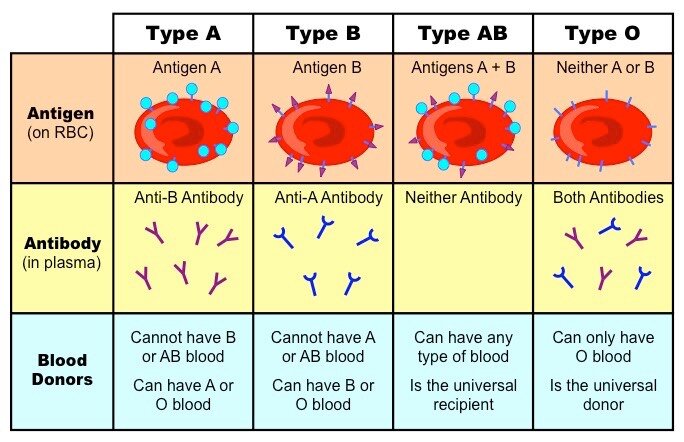Science & Technology
Bombay Blood Group
- 11 Sep 2019
- 3 min read
Recently there has been a spike in demand for a rare blood type called Bombay blood group.
- Under the ABO blood group system, blood group are classified into four common blood groups i.e. A, B, AB and O.
- Each red blood cell has antigen over its surface, which helps determine which group it belongs to.
- For instance, in the AB blood group, both antigens A and B are found. A will have A antigens; B will have B antigens. In O, there are no A or B antigens.
- The A, B, and O blood groups were first identified by Austrian immunologist Karl Landsteiner in 1901.
- The Bombay blood group (also called hh), is deficient in expressing antigen H.
- It means the RBC of hh blood group has no antigen H.
- Often the hh blood group is confused with the O group. The difference is that the O group has Antigen H, while the hh group does not.
- The rare Bombay blood group was first discovered in Mumbai (then Bombay) in 1952 by Dr Y M Bhende.
- Globally, the hh blood type has an incidence of one in four million. However, this blood type is more common in South Asia than anywhere else because of inbreeding and close community marriages.
- In India, one person in 7,600 to 10,000 is born with this type.
- Due to the rarity of hh blood type, patients face problems during a blood transfusion, often leading to death due to non-availability of hh blood.
- The individuals with Bombay blood group can only be transfused blood from individuals of Bombay hh phenotype only which is very rare.
- Rejection may occur if they receive blood from A, B, AB or O blood group.
- In contrast, hh blood group can donate their blood to ABO blood types.
- This group is generally not stored in blood banks, mainly because it is rare and the shelf life of blood is 35-42 days.







